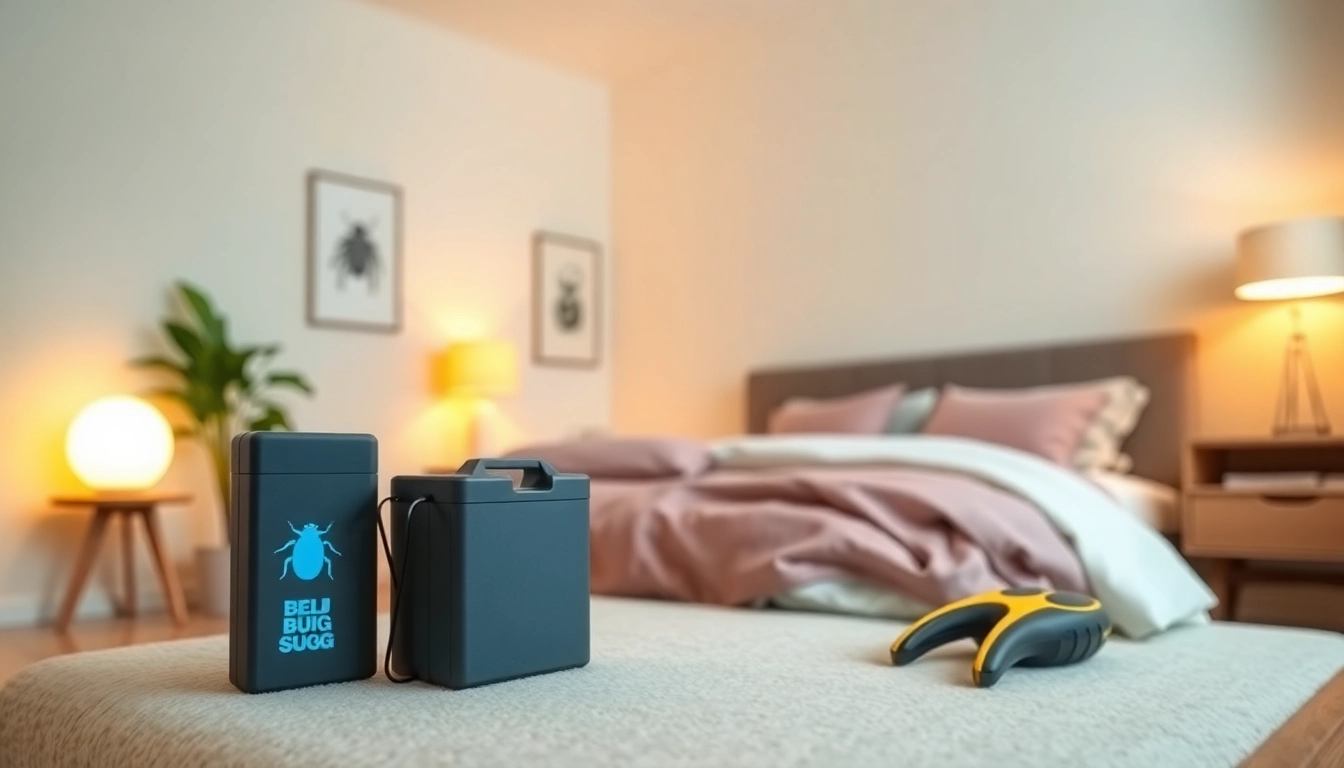Understanding Bed Bugs
Bed bugs are notorious pests that can disrupt your peace of mind, quality of sleep, and overall comfort in your home. Understanding these insects is the first step in effectively managing their presence and ensuring your living space remains bug-free. With their ability to quickly multiply and adapt, dealing with bed bugs requires an awareness of their identification, behavior, signs of infestation, and effective pest control strategies.
Identification of Bed Bugs
Bed bugs, scientifically known as Cimex lectularius, are small, oval-shaped insects that range in size from 1 to 7 millimeters. Typically brown in color, adult bed bugs are often about the size of a common apple seed. Their bodies become swollen and reddish after feeding on blood. Recognizing bed bugs can be challenging due to their size and shape, but they can often be found hiding in the crevices of mattresses, bed frames, furniture, and even behind wallpaper and light switch plates.
Behavior and Habitat
Bed bugs are nocturnal creatures, which means they are most active at night when humans are asleep. They are attracted to warmth and carbon dioxide, making human hosts ideal. After locating a host, bed bugs use their sharp mouthparts to pierce human skin and feed on blood for several minutes before retreating to their hiding spots. They prefer dark and secluded areas during the day, which makes thorough inspections crucial for identification and control.
Signs of Infestation
Identifying signs of a bed bug infestation is essential for prompt action. Common indicators include:
- Red or dark spots on sheets or mattresses, commonly referred to as bed bug excrement
- Shedding of bed bug skins, which appear translucent and are often found near sleeping areas
- Live bed bugs hiding in crevices, seams, or folds of furniture and bedding
- Unpleasant, sweetish odor produced by bed bug secretions
If you observe any of these signs, it’s crucial to initiate bed bug pest control measures immediately.
Methods of Bed Bug Pest Control
Effectively tackling bed bug infestations requires a combination of strategies tailored to the severity of the problem. Here, we will explore professional pest control services, DIY control techniques, and the integrated pest management (IPM) approach.
Professional Pest Control Services
Engaging professional pest control services is often the most effective way to eliminate a significant bed bug infestation. Professional exterminators are equipped with the tools and knowledge necessary to locate and eradicate bed bugs efficiently. Treatment methods may include:
- Insecticide application – Professionals use specially formulated insecticides deemed safe for indoor use while effectively targeting bed bugs.
- Heat treatment – This method involves raising the temperature in infested areas to levels lethal to bed bugs, effectively eradicating all life cycle stages, including eggs.
- Fumigation – In severe cases, fumigation may be required, enveloping the infested area in a gas that penetrates hard-to-reach places.
Considering the complexity of bed bug control, professionals can assess the situation and implement the best method for your specific needs. For those interested in a thorough approach, resources such as bed bug pest control services can provide dedicated support.
DIY Control Techniques
For minor infestations or as preventive measures, DIY bed bug control options can be effective. While these methods may require more effort and consistency, they can complement professional treatments or establish initial control. Recommended DIY techniques include:
- Vacuuming – Regular vacuuming of bedrooms, particularly around mattresses, carpets, and upholstered furniture can help remove bed bugs and eggs. Be sure to dispose of the vacuum bag immediately after use.
- Steam cleaning – Applying high-temperature steam to fabrics and surfaces can kill bed bugs on contact, a method that is particularly useful for bedding and curtains.
- Diatomaceous earth – Sprinkling food-grade diatomaceous earth in infested areas can desiccate bed bugs. This powder is harmless to humans and pets but deadly to insects.
DIY methods require diligence and persistence, as bed bugs can be resilient. It is best to approach these methods with the understanding that they may not eliminate an infestation entirely, especially if the problem is severe.
Integrated Pest Management (IPM)
Integrated Pest Management (IPM) offers a sustainable approach to pest control, incorporating methods that minimize pesticide use while effectively managing pest populations. The IPM approach to bed bug management typically includes:
- Inspection – Thorough examination of the premises to identify infestations and potential harboring locations.
- Setting action thresholds – Determining when to take action based on pest population levels.
- Prevention – Implementing proactive measures, such as encasements for mattresses and regular cleaning routines.
The focus of IPM is to achieve long-term pest control solutions that are effective while posing minimal risks to human health and the environment.
Preparing Your Home for Treatment
Effectively preparing your home for bed bug treatment plays a crucial role in the success of eradication efforts. Below are essential steps to take before a professional encounter or during a DIY effort.
Cleaning and Decluttering
Before any treatment, thoroughly clean and declutter the affected areas. This involves:
- Removing unnecessary items from the room to reduce potential hiding spots for bed bugs.
- Laundering bed linens, clothing, and other washable textiles in hot water to kill both bugs and eggs.
- Clearing clutter such as shoes, books, or personal items, as these can harbor bed bugs and signal a stronger infestation.
A clean, organized space will enhance the efficacy of treatment efforts.
Safe Storage Practices
To ensure that treatment is effective, it is critical to store items properly. Consider these practices:
- Seal clothing, linens, and other items in plastic bags after thorough cleaning to prevent re-exposure to bed bugs.
- Use airtight containers for storing items that may be kept in infested areas to avoid reinfestations.
- Refrain from placing items on the floor during and after treatment, increasing the chance of exposure to bed bugs.
Effective storage practices significantly minimize the risk of reinfestation.
Identifying Infested Areas
Identifying infested areas is critical, as it helps to focus treatment efforts. Pay special attention to:
- Mattresses and box springs, particularly seams and corners
- Headboards, bed frames, and other furniture
- Cracks and crevices in walls and floors
- Upholstered furniture and carpets
Documentation of infested areas aids in tracking progress during treatment.
Aftercare and Prevention
After successfully treating a bed bug infestation, it is crucial to adopt measures that will prevent re-infestation and ensure lasting control over time. Monitoring and ongoing preventive strategies are essential components of this process.
Monitoring for Recurrences
Even after treatment, vigilance is vital. Implement monitoring strategies such as:
- Regular inspection of areas previously infested during the weeks following treatment.
- Use of bed bug monitors or traps that can capture emerging bed bugs, alerting you to potential recurrence.
- Continued vigilance when traveling, ensuring you inspect accommodations and luggage before reintroducing items to your home.
Proactive monitoring will help catch any resurgence before it escalates into a significant infestation.
Long-term Prevention Tips
To maintain a bed bug-free environment, adhere to long-term prevention tips such as:
- Encasing mattresses and box springs in bed bug-proof covers to prevent them from nesting.
- Regular cleaning and vacuuming, particularly in bedrooms and high-risk areas, to eliminate potential pests.
- Being cautious about second-hand items such as furniture, and thoroughly inspect them before bring them into your home.
Consistency in these practices can significantly reduce the risk of future infestations.
Cost Considerations for Ongoing Pest Control
While engaging professional services can be costly, consider your long-term strategy for pest management. Costs will vary based on:
- The extent of the infestation
- The treatment methods employed (DIY, professional, heat treatment)
- The frequency of follow-up treatments
Be open to allocating a budget for ongoing vigilance to keep your home bed bug-free.
Resources and Support for Homeowners
Homeowners dealing with bed bug issues can benefit from a variety of resources and support options available in their communities. Knowing how to find help can make a significant difference in addressing bed bug concerns.
Finding Local Exterminators
Locating a reliable, local exterminator specializing in bed bug treatment can significantly facilitate the control process. Consider searching through:
- Online directories and review sites that aggregate pest control specialists
- Local community boards and recommendations from friends or family
- Professional pest control associations that offer lists of licensed exterminators in your area
Engaging a certified professional can provide you with the assurance that techniques used are both safe and effective.
Community Support and Advice
Community support can also play a vital role in navigating bed bug problems. Consider the following resources:
- Online forums and social media groups where homeowners share experiences, treatments, and solutions
- Local health departments that may host educational sessions or offer pamphlets on pest management
- Support groups where affected individuals can share insights and advice
Community-driven support networks can provide essential encouragement and shared knowledge in the pest control journey.
Understanding Legal and Health Guidelines
Familiarizing yourself with legal and health guidelines related to pest control can empower homeowners to make informed decisions. Key areas include:
- Local health regulations that dictate pest control practices within your community
- Legal obligations for landlords regarding pest control in rental properties
- Health effects associated with pesticide use and safety measures to mitigate potential risks
By staying informed, you can navigate pest control challenges while safeguarding your health and well-being.



